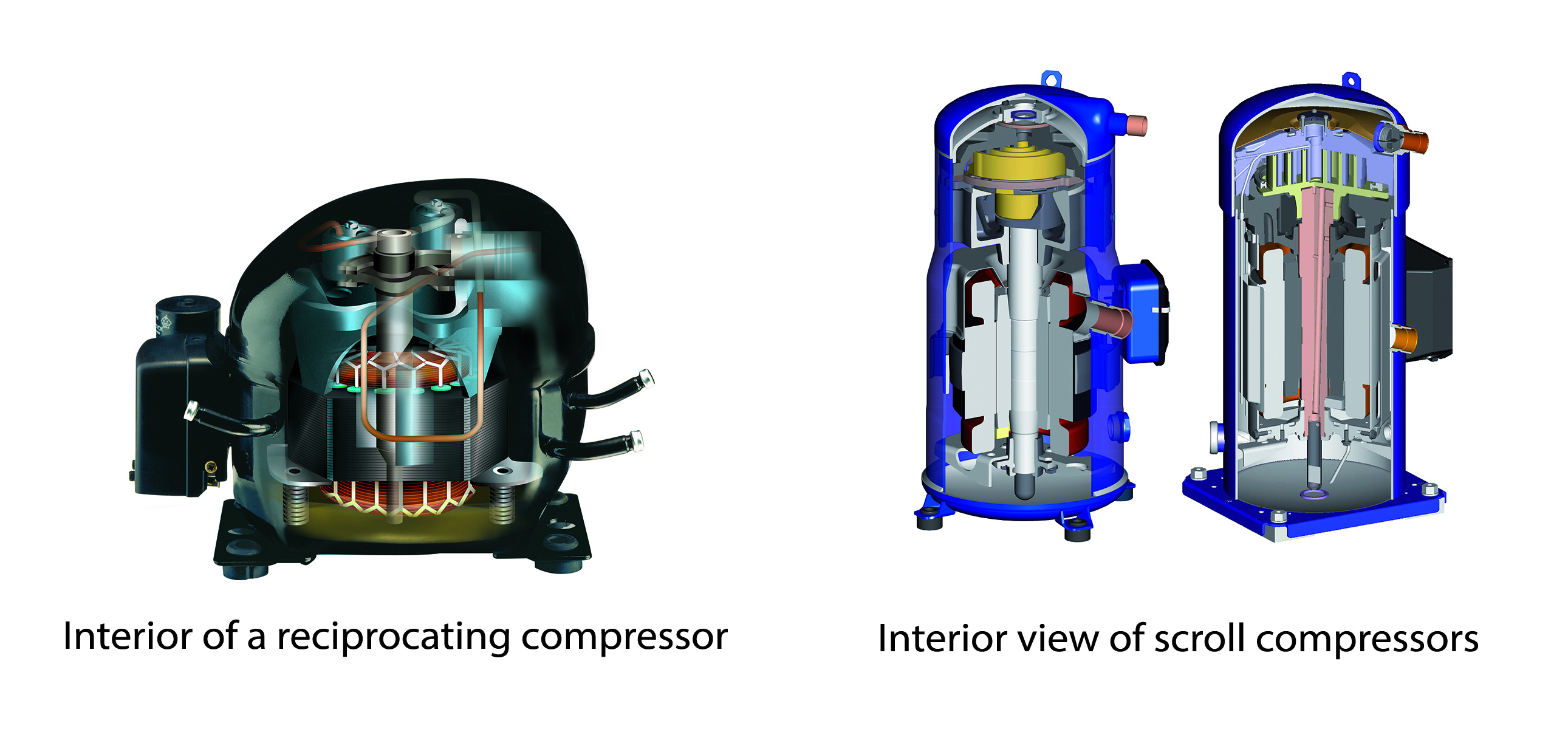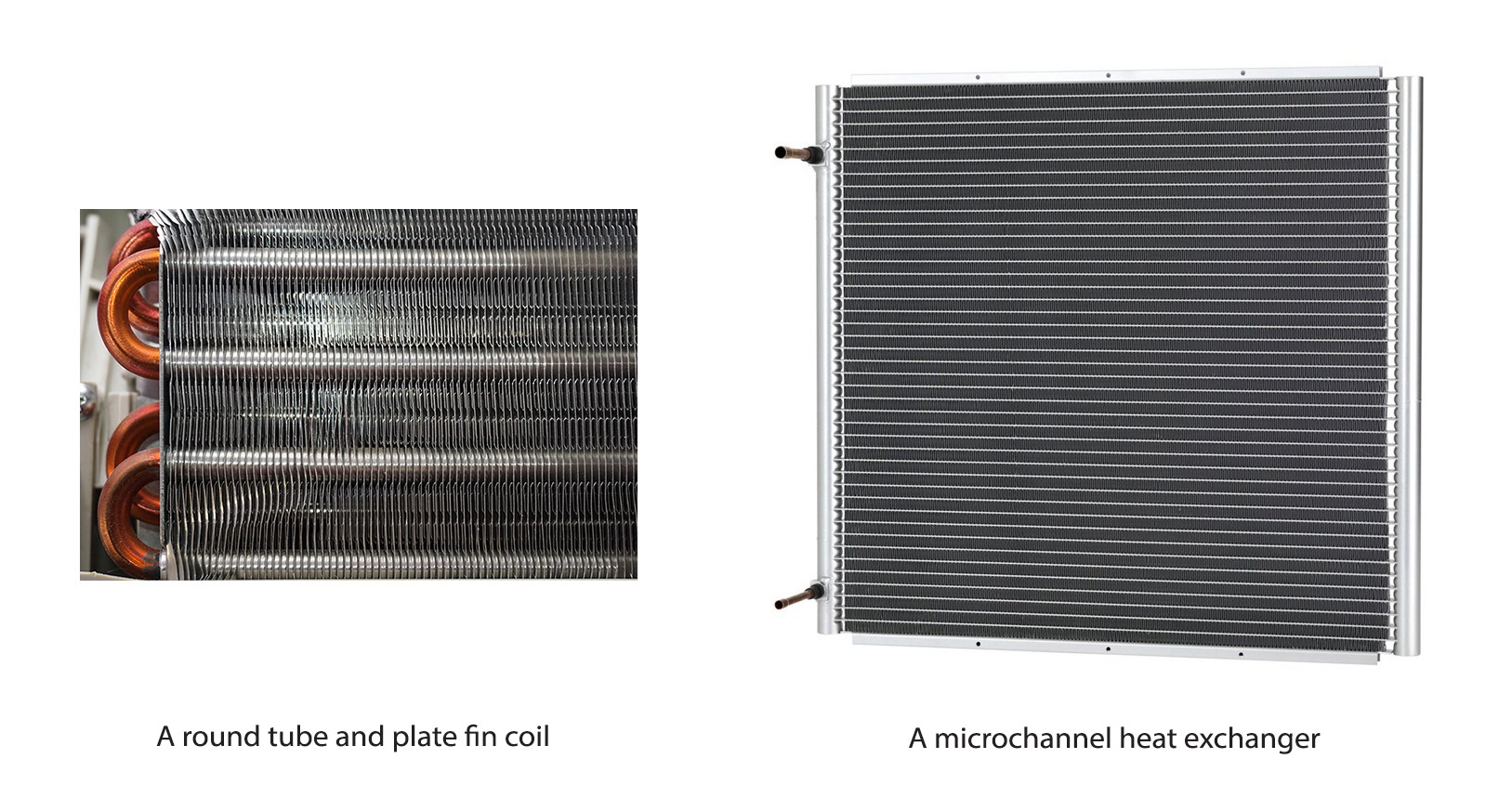Walk-in coolers and freezers are standard fixtures in many restaurants, hotels, convenience stores, and other places where food and beverages or other temperature sensitive materials are handled and stored. But not all walk-ins are created equal. Depending on the components included in its design, a cold room may be powerful and efficient or weak and wasteful. There are many factors to consider when designing a walk-in—including its size, intended purpose, and budget—and while the basic design elements of the walk-in, like insulation and square footage, are important to consider, nothing will have a greater impact on a walk-in’s performance than a properly designed and sized refrigeration system. Condensing units are a critical part of the overall refrigeration systems, having nearly every component needed in order to transfer heat out of a walk-in cooler or freezer and keep contents fresh or frozen; exploring the components that make up a high-performing condensing unit is a good place to start.
Compressor
The role of a compressor in a refrigeration system is to pressurize the refrigerant. This results in the refrigerant temperature increasing as it moves to the heat exchanger. The hot refrigerant releases its heat outside of the system. The refrigerant then moves back into the walk-in through a thermostatic expansion valve, which causes the liquid refrigerant to vaporize as it enters the evaporator unit. The refrigerant absorbs heat inside the walk-in, lowering the interior temperature and the cycle continues. Thus, compressors are vital components of any refrigeration system—and in this case, a walk-in cooler and freezer.
There are several kinds of refrigeration compressors available, though most walk-ins use either a reciprocating or scroll compressor. For smaller walk-ins, a small reciprocating compressor with a capacity of up to 1 horsepower (hp) is usually recommended while scroll compressors are a better fit for larger cold rooms as their capacities start at about 1 hp. Scroll compressors have fewer moving parts than reciprocating compressors, which results in fewer opportunities for break downs and a long-lived, reliable unit. Scroll compressors are also incredibly energy efficient, with some models showing 35% lower energy consumption compared to reciprocating compressors under laboratory conditions.

Heat exchanger
A heat exchanger's job, as another key component inside the condensing unit is to transfer heat out of the walk-in efficiently and reliably. A heat exchanger is a passive component formed from metal in the shape of a hollow tube or plate that separates substances at two different temperatures. The design of the heat exchanger, from the materials used to its shape and structure, are crucial in determining a heat exchanger’s performance.
Traditionally, the most predominant air-cooled heat exchanger has been a round tube made from copper surrounded by aluminum plate fins. The aluminum fins increase the surface area to improve the efficiency of heat transfer. This kind of heat exchanger design is known as a round tube and plate fin (RTPF) coil. However, an alternative to the RTPFs, the microchannel heat exchanger (MCHE), is rapidly growing in popularity.
MCHEs are built with three main components: flat aluminum tubes, headers, and aluminum fin arrays in a corrugated profile. The aluminum components are brazed together, creating a direct metallic bond between the fin and the tube, eliminating air gaps and improving heat conduction. MCHE tubes are flat, reducing aerodynamic drag—and thus improving efficiency—compared to traditional round tubes. The multiport design enables a smaller hydraulic internal diameter than RTPF coils, improving heat transfer and minimizing refrigerant charge level. Tubes are segmented into multiple parallel-flow sections to circulate refrigerant more effectively, avoiding the pressure drop limits inherent in RTPF circuiting. And because MCHEs are made entirely from aluminum, corrosion is all but eliminated.

As you can see, a walk-in cooler or freezer is only as good as the parts that make it up, so choosing the best components for your needs is important in order to deliver the highest performance possible.
Join us next time as we continue to explore the components that make up a walk-in cooler or freezer condensing unit.
Part 1 - Walk-in coolers: an introduction
Part 3 - Walk-in coolers: filter driers and sight glasses
Part 4 - Walk-in coolers: pressure switches, ball valves, and fan speed controllers
Part 5 - Walk-in coolers: thermostatic expansion valves and solenoid valves
Part 6 - Walk-in coolers: temperature controls
